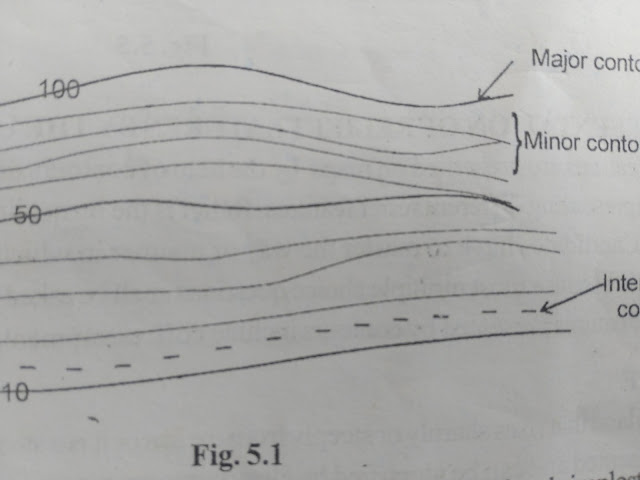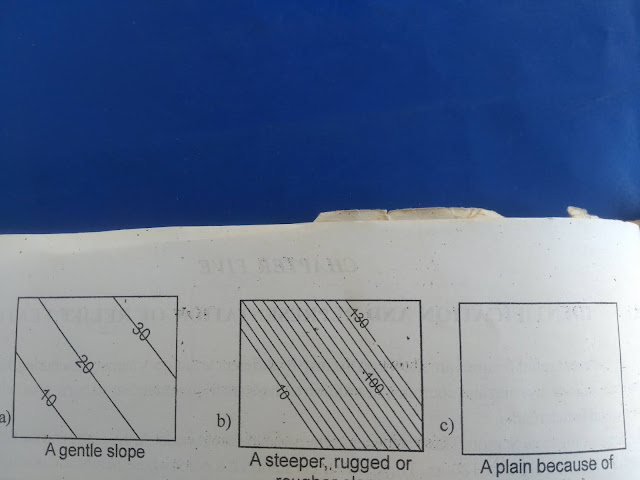IDENTIFICATION AND REPRESENTATION OF RELIEF FEATURES
Different relief features are shown on the map by different techniques namely, hachuring, hill shading, form lines, color layering and contours. In addition to these are trigonometrical stations, spot heights, relief drawing and bench marks.
- Trigonometrical station: This is represented by a triangle having a dot in the center and height of land written by the site. Trigonometrical station is a point whose height and position has been determined with the greatest accuracy as the basis of the original survey of the country.
- Spot height: A spot e height is represented by a dot (.) and the height of the place written against it or by the side e.g .218 spot height determines points above sea level and are accurate height of places. Unlike trigonometrical stations which are confined to hill tops, they can be found any where e.g along roads, rivers and between contours.
- Bench marks: They are represented in the United Kingdom (for example) by a broad arrow with a bar across it's apex and a bench mark number engrave or cut in solid rocks, walls concrete, gate post or side of buildings. Bench marks are surveyor's defined point of reference and it is fixed on an elevation. They actually exist on the ground.
- Contour: A contour is an imaginary line drawn on a map to join all places of same height above or below sea level. Contours differ in thickness and brightness. Thus they are three contour types which are clearly distinguished on a map. i) Major, principal or master contours: These contour have emphasized thickness or brightness and color. If you look at any map these contours attract the eyes before the others. They are fewer on the map and in between them are found normal contours. ii) Minor or Normal contours: These contours are always numerous on the map than the principal or master contours. They are not as bright or thick as the major contours. iii) Intercalary contours: These contours are rare on maps and are found only in very gentle relief regions. They are easy to recognize on the map because they are in broke lines
Of all the methods showing relief, contours are most commonly used and simplest form . The contours are are drawn in different shapes and forms. They also differ in their degree of closeness. The closer the contours are, the steeper, the rougher or the rugged the slopes is and the more spaced out or wider apart the contours are the more gentle the slope is and where there are no contour lines, it means it is plain

